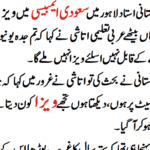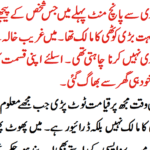In spite of being the main sources of death around the world, strokes and respiratory failures can to a great extent be stayed away from with the right way of life decisions and clinical consideration. This article researches essential and reasonable approaches to diminishing your bet of these serious afflictions.


Understanding Coronary failures and Strokes
Definition and Blueprint
– Stroke: A stroke happens when there is a disturbance or decrease in the blood supply to a piece of the mind, which keeps cerebrum tissue from getting oxygen and supplements.
– Respiratory failure: A “coronary failure” happens when the progression of oxygen-rich blood to a piece of the heart muscle unexpectedly becomes obstructed, ordinarily by plaque development in the coronary corridors.
The Urgent Job of Anticipation
Since they can bring about death, diminished personal satisfaction, and long haul incapacity, forestalling strokes and respiratory failures is fundamental. The frequency of these circumstances can be essentially diminished with the execution of safeguard measures and information on the gamble factors.
Classifications and Types
Kinds of Strokes
-Ischemic Stroke: Achieved by a blockage in a hall that arrangements blood to the frontal cortex.
– Hemorrhagic Stroke: Happens when a vein in the psyche detonates, provoking depleting in or around the frontal cortex.
– Transient Ischemic Attack (TIA): Regularly called a little stroke, it’s a short time frame of secondary effects like those of a stroke.
Different Sorts of Coronary episodes
A serious respiratory failure wherein a coronary course is totally obstructed is known as a ST-Rise Myocardial Dead tissue (STEMI).
– Non-ST-Height Myocardial Localized necrosis or “NSTEMI” is a cardiovascular failure that is less serious and happens when the course is just to some extent hindered.
– Calm Respiratory failure: Occurs with no certain incidental effects aside from can really hurt.
Signs and Side effects
The Most Widely recognized Indications of a Stroke
– Sudden deadness or weakness in the face, arm, or leg, especially on one side of the body.
– Unexpected disarray, trouble talking, or trouble grasping discourse
– Surprising trouble finding in one or the two eyes.
– Out of nowhere trouble strolling, dazedness, unbalance, or absence of coordination.
– A suddenly extreme migraine with no known reason
The Most Widely recognized Indications of a Cardiovascular failure
– Agony or uneasiness in the chest
– Torment or uneasiness in the stomach, back, neck, or jaw, as well as in one or the two arms.
– An absence of breath.
– Unsteadiness, sickness, or cold sweats.
Uncommon Signs
– Stroke: Windedness, unexpected hiccups, queasiness, weariness, or agony in the chest
– Coronary failure: heartburn like side effects, jaw agony, and weariness.
Causes and Chance Factors
Factors Natural
– Hereditary qualities: A family background of coronary episodes or strokes.
– Age: Hazard ascends as you progress in years.
– Sex: Men are bound to get it, yet ladies are bound to get it after menopause.
Factors in the Climate
Smoking expands chance and harms veins.
– Horrible eating routine: high in sodium, soaked fat, trans fat, and cholesterol.
– Stationary Way of life: Weight and other gamble factors are exacerbated by inertia.
Factors in One’s Day to day existence
– Stoutness raises the gamble of elevated cholesterol, diabetes, and hypertension.
– Exorbitant Liquor Utilization: Can bring about coronary illness and hypertension.
– Stress: Consistent pressure can cause course harm and raise risk.
Tests and Analyses
Stroke Assessment
– Actual Assessment: Analyzing for signs like deadness, changes in vision, and inconvenience talking.
– Imaging Tests: carotid ultrasound, a CT check, and a X-ray
– Blood Tests: Distinguishing different circumstances and problems of the coagulating system.
Coronary episode Assurance
– The electrical action of the heart is estimated by an electrocardiogram (ECG).
– Checking for cardiovascular chemicals like troponin with blood tests
– Imaging tests incorporate an echocardiogram, coronary angiogram, and chest X-beam.
Choices for Treatment
Stroke Clinical Medicines
– Thrombolytics, anticoagulants, and antiplatelets are drugs.
– Medical procedure: angioplasty and carotid endarterectomy.
– Restoration: Word related, discourse, and non-intrusive treatment
Respiratory failure Clinical Medicines
Headache medicine, thrombolytics, anticoagulants, and beta-blockers are among the drugs.
– Medical procedure: coronary supply route sidestep uniting (CABG), stent situation, and angioplasties
– Changes in Way of life: Diet, work out, and stopping smoking.
Safeguard Activities Good dieting
– A fair eating routine that is loaded with entire grains, lean proteins, natural products, and vegetables.
– Scale back red meat, dairy, and handled food sources by restricting soaked and trans fats.
– Diminish Sodium Utilization: Select low-sodium choices and try not to add extra salt to feasts.
Ordinary Movement
– Vigorous Activity: Somewhere around 75 minutes of extreme focus practice or 150 minutes of moderate-force practice every week.
– Strength Preparing: Two days out of every week or more
– Flexibility and Balance Activities: Yoga and expanding.
Try not to smoke or drink an excess of liquor.
– Quit Smoking: Search for help through end tasks and care gatherings.
– Moderate Liquor Utilization: Ladies ought to restrict themselves to one beverage each day and men to two.
Decreasing Pressure
– Care and contemplation: Standard practice can assist with lightening pressure.
– Strong Rest Propensities: Pull out all the stops significant length of rest each night.
– Social Help: Keep on areas of strength for developing with loved ones.
Individual Stories or Relevant examinations
Suggestions for Reality
– John’s Story: John, a 55-year-elderly person, changed his eating regimen and work-out everyday practice after a respiratory failure. This made him carry on with a better life and made him less inclined to have heart issues from now on.
– Mary’s Insight: Mary, a 60-year-old individual, managed her strain and further fostered her rest penchants resulting to experiencing a TIA, basically cutting down her bet of a full scale stroke.







